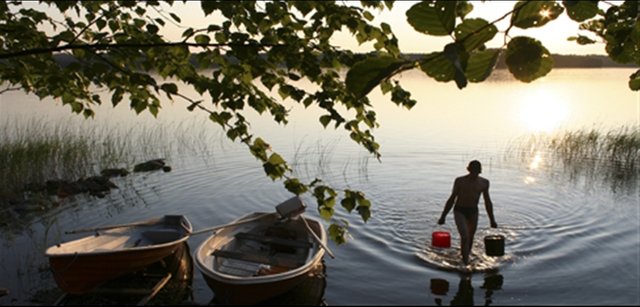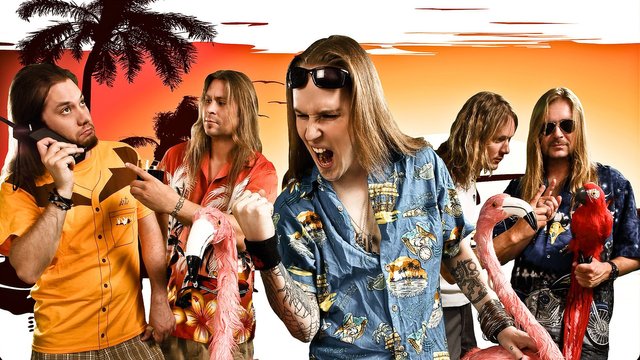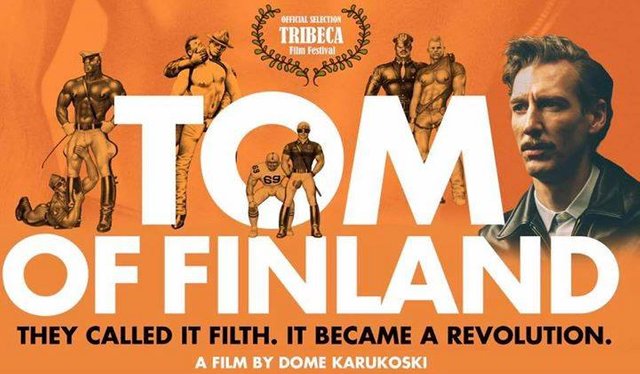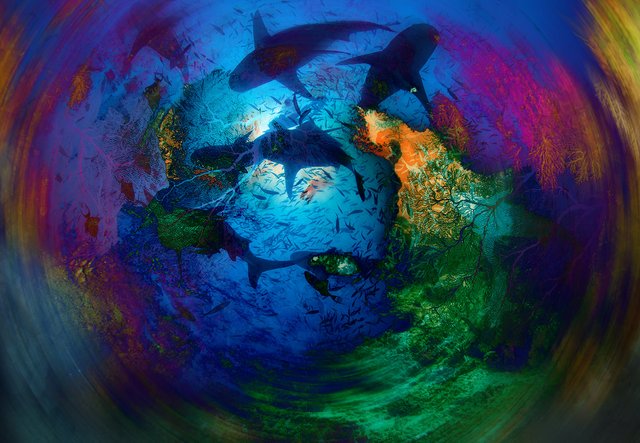culture of finland
The culture of Finland absorbed itself as a legacy of those pagan times, when the "spirits of nature" and "the forces of the earth" were revered, as well as later Christian customs and holidays.
Mikael Agricola (circa 1510-1557), church figure, scholar-philologist, creator of the literary Finnish language
Elias Lönnrot (1802-1884), philologist, collector and researcher of Karelian-Finnish epos "Kalevala", doctor, botanist
Alexis Kivi (1834-1872), writer, one of the founders of fiction in the Finnish language
Jan Sibelius (1865-1957), composer, founder of Finnish national music
Cultural figures who were among the ten greatest people in the history of Finland following the results of a general vote held in 2004 within the framework of the TV program "The Great Finns"
Due to its geographical location and historical features, the culture of Finland was influenced by the neighboring Baltic, Germanic and Slavic peoples.
Since the second half of the XX century in Finland, there has been a marked influence of American culture, as well as the cultures of other countries and peoples. This is connected with the development of communication media, and with the development of tourism, and with the fact that a significant part of young people study or are interned in other countries, and young people from other countries study in Finland.

The culture of Finland also includes the culture of small national groups - the Saami, the Finnish Swedes, the Finnish Tatars and others - that preserve their own traditions and customs.
History of Culture in Finland

Finland's culture has always been influenced by Sweden, while a long stay in Russia has had little impact on its development. After gaining independence in 1917, the Finns focused their attention on the ethnic originality of their cultural heritage. Today's Finns have great respect for purely national values and traditions.
The Finnish-Karelian national epos of Kalevala, which was collected and processed by the outstanding Finnish philologist and naturalist Elias Lönnrot (the first edition - in 1835, the expanded and modified version - in 1849) exerted a significant influence on Finnish culture. The influence of Kalevala can also be found in the literature (for example, in the works of Alexis Kiwi and Frans Sillanpää), and in music (especially in the work of Jan Sibelius).
Literature of Finland until the middle of the XIX century was mostly Swedish, Finnish literature began to develop actively from the 1830s and by the beginning of the 20th century became dominant (at the beginning of the XXI century the number of Finnish residents for whom Swedish is native is less than 6% ).
Fine art of Finland since the XIX century developed with the support of the leading European schools in Paris, Dusseldorf, St. Petersburg. In 1846 the Finnish Art Society [fi] was founded. In the field of fine arts in Finland, Werner Holmberg, who laid the foundations of national landscape painting, the artists Yalmar Munsterelm, Berndt Lindholm [fi] and Victor Westerholm, Adolf von Becker [fi], Karl Jansson, whose paintings are sustained in the traditions of late modernism, left a significant mark on the field of fine arts in Finland. The brothers von Wright created romantic rural landscapes. The end of the XIX century is considered the "golden age" of Finnish painting and is marked by the works of such masters as Albert Edelfelt, Eero Jarnefelt and Pekka Halonen. The largest representative of national romanticism in painting was Axel Gallen-Kallela, who wrote on the plots of the Finnish epic and folklore. The original talent of Juho Rissanen described scenes of folk life. An imposing portraitist was Antti Faven. Known in the art world are also the names of women painters Maria Vijk and Helena Sherfbek.
Sculpture as a genre of art in Finland began to develop only in the middle of the XIX century. Among the talented sculptors are Johannes Tuckainen, Robert Stigell [fi], Emil Wikström [fi], Alpo Saylo, Joryo Liipolu and Gunnar Finne [fi].
The concept of Finnish music is identified in the world culture with the work of Jan Sibelius. However, other Finnish composers were very successful: Selim Palmgren, Joryo Kilpinen (composer-songwriter), Armas Jarnefelt (composer of romances, choral and symphonic music) and Uuno Clami [fi]. Oscar Merikanto became famous as the author of the opera "The Virgin of the North".
To date, Finland occupies a significant place in European culture. In Helsinki, Turku, Tampere and Lahti there are symphony orchestras, in all settlements there are choirs and song collectives. In the theatrical life of the country the leading positions are occupied by the Finnish National Ballet, the Finnish National Theater, the Finnish National Opera and the Swedish Theater. In the city of Savonlinna in July of each year there are international opera festivals.
In 2010, a recession of labor employment in the sphere of culture was noted in Finland
Literature

Main article: Literature in Finland
Among the most famous figures of literature in Finland, one can mention the creator of the literary Finnish language Mikael Agricola, the researcher of the Karelian-Finnish epos Kalevala, Elias Lönnrot, one of the founders of fiction in the Finnish language, Alexis Kivi. Among the writers of the twentieth century, the author of novels about rural life is singled out, the only Finnish Nobel laureate in literature, Frans Sillanpää, the author of the novel Sinuhe, the Egyptian Mika Valtari translated into many languages, as well as the world-famous children's writer Tove Jansson, the creator of Moomintroll.
Music

The request "Finnish Music" is redirected here. On this topic you need a separate article.
Folklore
A special influence on Finnish music was provided by traditional Karelian melodies and lyrics, which drew its inspiration from the epos of Kalevala. Karelian culture is based on an understanding of Finnish myths and traditions. Over the past few decades, Finnish folk music has become a part of popular music (so, the notoriety outside of Finland received the Loituma project).
Opera
Main article: Opera in Finland
The first Finnish opera was written in 1852 by Fredrik Pacius, a German composer who lived in Finland. Pacius also put on the music the poem "Our Land" by Johan Runeberg; It was first heard in 1848, this work became an anthem of Finland.
In connection with the spread of the ideas of nationalism in the 1890s, the well-known symphonic poem by Jan Sibelius "Kullervo" for the male chorus, soloists and orchestra - according to one of the legends of the Finnish folk epic "Kalevala". In 1899, Sibelius wrote a symphonic poem for the dramatic theater "Finland", which played an important role in the Finnish national movement. Until now, Jan Sibelius remains one of Finland's most famous personalities and one of the symbols of the nation.
In our time, the Finnish opera retains its traditions. The most famous composers are Rautavaara Einoyuhani, known for his operas Vincent (1986-1987) about Vincent Van Gogh and Rasputin (2001-2003) about the murder of Grigory Rasputin); Lindberg Magnus; Aulis Sallinen, author of the operas The Horseman (1973-1974), The Red Line (1978) and Kullervo (1988) (these three operas are based on Finnish historical and folklore subjects), and The King Goes to France ( 1983), "The Palace" (1993) and "King Lear" (1999) ; Saariaho Kaya, who wrote operas Love from afar (2000), Adriana Mater (2006), Passion for Simone Weill (2006), music for ballets (Maa, 1991, production by Carolyn Carlson), vocal works (" From Dream Grammar, 1989, Soul Castle, 1996, Four Moments, 2002), string quartets Nymphaeus (1987, verses by Tarkovsky Arseny) and Terra Memoria (2007), concert for violin and orchestra " The Graal Theater (1994), plays for cello (Seven Butterflies, 2000), concert for cello and orchestra (2007, singer Anssi Karttunen).
The author of one of the most famous Finnish operas "The Last Temptations [en]" - composer Jonas Kokkonen .
Cinema

Main article: Cinematography in Finland
The beginning of the era of cinema in Finland is June 28, 1896, when in Helsinki the Lumiere brothers organized the first film screening in Finland. The first serious works, made by local masters, appeared in 1904; in one of the first films it was shown what children do in school at the time of change. In 1907 appeared the first feature film - "The Secret Moonshiners"
In 1926 for the first time the Finnish cinematographers applied installation.
The first sound film was released in 1931.
For the Finnish cinema, especially in the initial period, its own style and own artistic techniques are characteristic; In addition to this genre at that time - thriller, western, gangster film - did not develop in Finland.
The greatest influence on the work of directors of the 1960s and 1970s was provided by the director Nyurki Tapiovara. His films "Stolen Death", "Juha" and "The Way of Man" were recognized among the audience. Many films were shot according to the novels of famous national writers. Thus, the films "The Way of Man" (directed by Nyurki Tapiovara), "The Month of Harvest" (directed by Matti Kassil) were shot according to the novel by F. E. Sillanpää. The works of Alexis Kivi were also screened: the film The Rustic Shoemaker, which was a great success, was directed by Erkki Karu. Director Teuvo Tulio filmed Johannes Linnankoski's novel "The Song of a fiery red flower". The military theme also found its reflection in the adaptation of the novel by Väine Lynn "The Unknown Soldier", made by Edwin Laine.
The beginning of the 1960s became a remarkable search for new artistic styles. His contribution to the development of new genres, the improvement of artistic forms were made by such films as Eric Blomberg's "White Stag", Matti Kassil's "Blue Week", Rauni Mollberg's "Earth is a Sinful Song", Risto Järva's "The Game of the Case," Erkki's Brothers Kivikoski, "Boys" by Mikko Niskanen, "Portraits of Women" by Jorn Donner, Comedy by Spade Pasanen, films by farces of Peter von Baga.
The 1970s-1980s are characterized by the appeal of Finnish cinema to universal themes, its internationalization, which enabled Finnish cinema to find a spectator audience all over the world. The National Committee for Cinematography, created in 1969, which every year represents Finnish film production at major festivals, organizes festivals in Finland, and provides a great help in finding a foreign audience. In 2013, the film "The Apprentice" of filmmaker Ulrika Bengts was nominated for an Oscar-winning American Academy of Motion Picture Arts .
In connection with the development of television, and later the onslaught of video production, world cinema has experienced a serious crisis, as evidenced by a reduction in the audience.

culture of argentina
https://steemit.com/culture/@hassanbenali/5ajj4h-culture-of-argentina
World Banknotes: , Falkland Islands, Faroe Islands
https://steemit.com/culture/@hassanbenali/world-banknotes-falkland-islands-faroe-islands
Step-by-step recipe and all the details of the correct chicken broth
https://steemit.com/food/@hassanbenali/step-by-step-recipe-and-all-the-details-of-the-correct-chicken-broth
On foot to joy and peace.
https://steemit.com/life/@hassanbenali/on-foot-to-joy-and-peace
